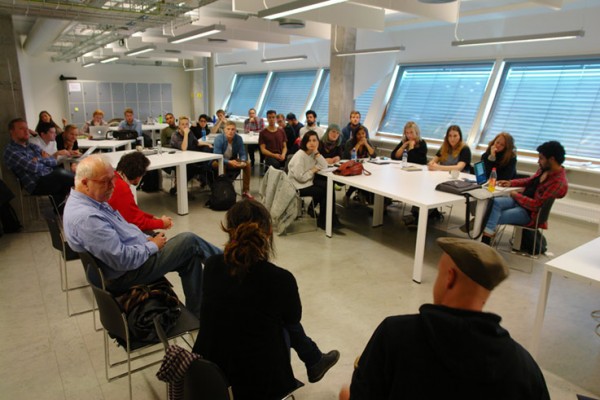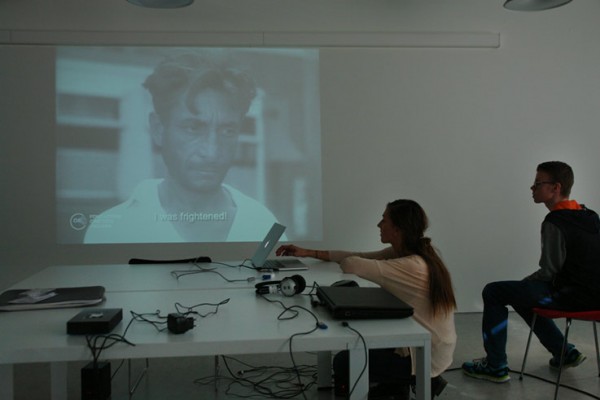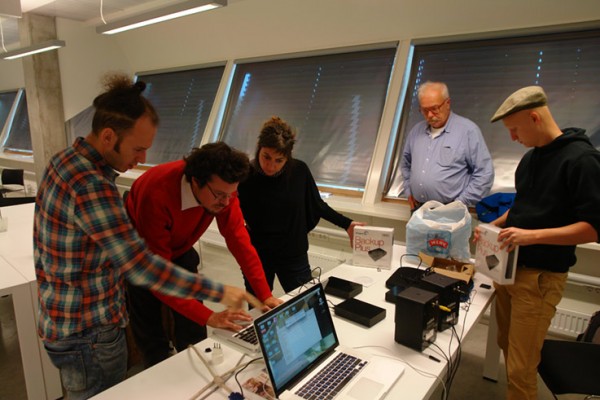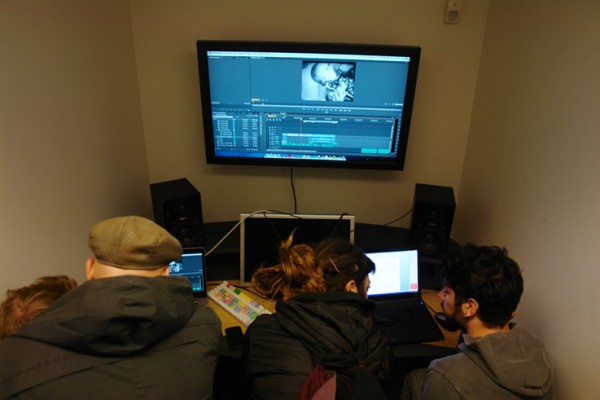Artistic experiences - process
Personalization of archival footage – Oslo
Place of the workshop: Oslo, Westerdals School of Art, Communication and Technology – Norway
Partners involved:
Cooperativa sociale e.s.t.i.a.
– Gabriele Raimondi, trainer and filmmaker
– Marika Lizzadro, trainer and filmmaker
Fondazione Cineteca Italiana
– Marcello Seregni, archivist
PhotoART Centrum
– Pavel Smejkal, trainer and photograph
– Peter Zakutansky, trainer and filmmaker
Westerdals Oslo ACT
– Morten Thomte, teacher
-Iram Haq, teacher
Audiences and territories involved:
29 film students from Oslo, 2nd year film&TV, hosted by Westerdals Oslo ACT
Archives used:
Documentary material from the sixties and seventies from Cineteca Milano
‘Home video material’ from Photo Art Centrum, Kosice from the seventies and eighties
Concept and result of workshop:
We decided that the framework of this first workshop would be ‘Everyday life’. It was to be based on the archives from Slovakia and Milan, Italy. The Slovak archives were ‘home videos’ from the seventies and eighties from the former Czechoslovakia. It was footage people had shot during their holidays, playing with their kids, celebrating birthdays, in their spare time, building a house etc. That was to be supplimented by footage on the same theme and from the same period from the Cineteca Milan archives (documentaries). We also decided that no more than 1 hour of footage from each source was to be submitted.
Methodology proposed : ‘Personalization of archival footage.’
We wanted to include the students’ own experiences and personalities into the films to avoid this being ‘an academic excercise’. Rather we wanted them to make personal reflextions on ‘images from the history’ with which they were not familiar in advance. We also said they could include material of their own (´home videoes’ from their own childhood/upbringing). One student did this and made a partly factual, partly fictional film about his grandfather’s travel to a train station in the north of India, mixing his father’s images with those from the Slovak/Italian archives. Others challenged the ‘truth’ of images by questioning the way we tend to believe the combination of words and pictures. They would tell to different and conflicting stories using the same images.
We encouraged the students to use whatever form they found suitable for their ideas and did not restrict them in any way. Some were poetic, some funny, some ‘adventure-like’ and all very different.
Objectives foreseen:
The 29 students from Westerdals, Oslo ACT were exposed to all the material during the first day. They all got copies of all the material and started working right away. They were devided into groups of 1, 2, 3 or 4 (according to their own wishes) and made 12 films between 2 and 4 minutes of length. Which was a requirement we had decided on. They were also told not to use music where the rights were not cleared. The students worked on making the films for 3 days under the guidance of the international tutors and the films were screened during day 4.
Summary of the methodology proposed:
We found that it was possible, within the time available, to come up with interesting films using archives. The students responded well to the challenge, although they didn’t have the time to ‘fine tune’ their pieces – they were sketches. But working with archives in this manner showed some interesting aspects in the realm of philosophy and filmmaking and turned out to a useful tool in a deeper understand of images and history and images and culture.
We also noted that having a body of 1 hour material from each of the two archives was too much and it was very hard to digest and process for the students in this short time. So maybe there should be a limit on 20-25 minutes.
Results of the workshop:Â We produced 12 short films during the workshop.




